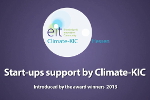Fully Optimised and Reliable Emissions Tool (FOREST)
Challenge Platform: Greenhouse Gas Monitoring
Project Start Date: 09/2013
Lead partner: ASTRIUM, France
Project type: Innovation project – Develops and brings to market climate-relevant knowledge, products and services
Project lead: Pierre Parrot, ASTRIUM
Partners
This project involves 4 partners in 2 European countries:
- ASTRIUM, France
- National Physical Laboratories (NPL), UK
- Laborotoire des Sciences du Climat et de l’Environment (UVSQ-LSCE), France
- CDC Climat, France
Concept
Whilst there are a number of models that measure the carbon emissions produced by deforestation and degradation, they are generally considered to be technically demanding and inefficient. The Fully Optimised and Reliable Emissions Tool (FOREST) project lead by ASTRIUM aims to improve the process of Measuring, Reporting and Verification (MRV) of carbon emissions caused by deforestation.
The climate change issue
Tropical deforestation is responsible for millions of tonnes of carbon emissions every year, making it the second leading cause of global greenhouse gas emissions (approximately 20%). Every year it is estimated that 13 million hectares of rainforest are cut down to be used or sold as fuel or timber. The cleared land is then used for non-forest uses, farming, industry, urbanisation. It is imperative that measures are taken to strengthen MRV systems so that extra emissions caused by deforestation can be accurately offset.
The Project Solution
Carbon emissions trading provides an incentive to reduce these emissions. However, the ability to implement MRV systems to support emissions trading is low in many countries, as there are currently no efficient MRV systems for monitoring the impact of tropical deforestation.
The FOREST project aims to develop a reliable, fully integrated and cost effective tool for measuring carbon emissions as result of deforestation. Using remote sensing, field measurement or modelling, this tool will provide reliable data on forest cover, degradation, productivity and estimates of biomass stored in forest areas.
FOREST will provide clear figures of carbon emissions. This will allow for the implementation of an emissions cap. Emitters are given a certain number of carbon credits, allowing them to emit one tonne of carbon dioxide per credit. In a growing forest carbon market (worth $237 million in 2011), this gives them an incentive to reduce emissions as they can sell on surplus credits.
These credits can be used in a number of compliance schemes, including the Kyoto Protocol’s Clean Development Mechanism (CDM). By providing improved MRV tools, the project will support forest owners to get offset funds that will make it possible to preserve their forests, or even restore them.
The role of Climate-KIC
Climate-KIC has assisted ASTRIUM in the early stages, with the planning of the project. This has established a platform to transform ASTRIUM’s goals into concrete operational results. Climate-KIC has offered a great network of partners who have expertise in specific areas of the project and provided crucial funding.



